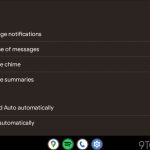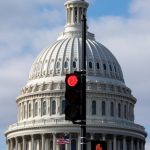A sports and cultural center with an indoor swimming pool, theatre, museum and multipurpose rooms was inaugurated in the Holy City. A “crazy” work strongly desired by the Custody of the Holy Land for “its young people”, Jews and Arabs without distinction. For the Patriarch of Jerusalem, investing in young people is not a slogan, but “energy and hope for the whole society”.
Jerusalem () – “Invest in young people” is not a slogan or a declaration of principles, but an idea of mission “that is as valid here as anywhere else”, they must be counted on “not only because, trivially, represent the future”, but above all because “they have psychological and human energy. This counted the Patriarch of Jerusalem for Latinos His Beatitude Pierbattista Pizzaballa, who is among the new cardinals that Pope Francis appointed on July 9 at the end of the Angelus on the occasion of the consistory scheduled for September 30. Words that the newly appointed cardinal addressed when commenting on the recent opening of the “Capital of the Resurrection”, a sports and cultural center recently inaugurated in the holy city and aimed, above all, at young Christians. The boys and girls, explained the Patriarch, “are energy and hope for the whole of society.”
For the Custody of the Holy Land, which has been in the front line supporting the implementation of the project, this is another sign of hope and peace in a reality that very often connotes tension, bloodshed and internal conflicts. The “Cultural and Sports Center, Capital of the Resurrection” is located in the Holy Land High School, in the old walls, between the New Gate and the Damascus Gate, almost hidden between the historic houses and within the confines of the great property kept and cared for by the minor friars.
The inauguration took place at the beginning of July and was attended, among others, by the Custos Br. Francesco Patton, the Pizzaballa patriarch, representatives of the European Union, the French Development Agency and the Transalpine Consulate, who are among the financiers of the project. Right from its name, it intends to highlight the history, religiosity and mission of the Holy City and the very reality of the Christians of Jerusalem, a reality that must continue to live and be a witness, and not just a museum of the past for pilgrims. and tourists. In this perspective, sport and culture can be a sign and the way to promote a path of reconciliation and hope among the different peoples (Christians, Jews and Muslims), as Br. Ibrahim Faltas, Vicar of the Custody of the Holy Land.
The center, according to the explanation of the Custody, houses an indoor swimming pool, a theater, an archaeological museum, an open-air amphitheater equipped with multipurpose training rooms connected to the basketball court that is located on the roof of the structure. All these spaces are available to high school students, Jerusalemites, Jews and Arabs alike, and those who want to exercise or have a “unique experience” in a place rich in “history, archeology and sport , including pilgrims and tourists”.
The works began in 2021, with the collaboration of the EU and the Paris government, in addition to being able to count on what the minor friars call the “silent generosity” of many benefactors from around the world. The works that were carried out are related to the episodes and teachings of the Gospel: from the pool that recalls the healing of the paralytic and the recovery of the blind man’s sight to the stone walls, each of which has a story to tell, such as the columns of the churches on which the faithful leaned, finding the support of God.
“It was a crazy idea that nobody believed in,” stressed Fr. Ibrahim Fouls. “When I thought of building a pool here, no one believed me”, but it finally took shape and life despite numerous archaeological constraints and practical obstacles, “dig up to 15 meters underground”. A “very important” center for the old city of Jerusalem, he continued, and “for its young people, because it will keep them away from drugs. During the works, the remains of a well and a church from the Byzantine era came to light, and “a small museum, created in The interior of the center”, stressed the cleric, “collects some findings”. The center consists of four floors, a 16×8 meter pool with a sauna, multipurpose rooms and an outdoor multipurpose field. “Everyone has been affected due to the pandemic, even the inhabitants of Bethlehem, who live mainly from tourism. They have worked here day and night, and this – concluded the Franciscan – has helped us to finish the job”.







![[Img #74675]](https://thelatestnews.world/wp-content/uploads/2024/12/They-discover-a-new-class-of-X-ray-sources-in-the-150x150.jpg)



